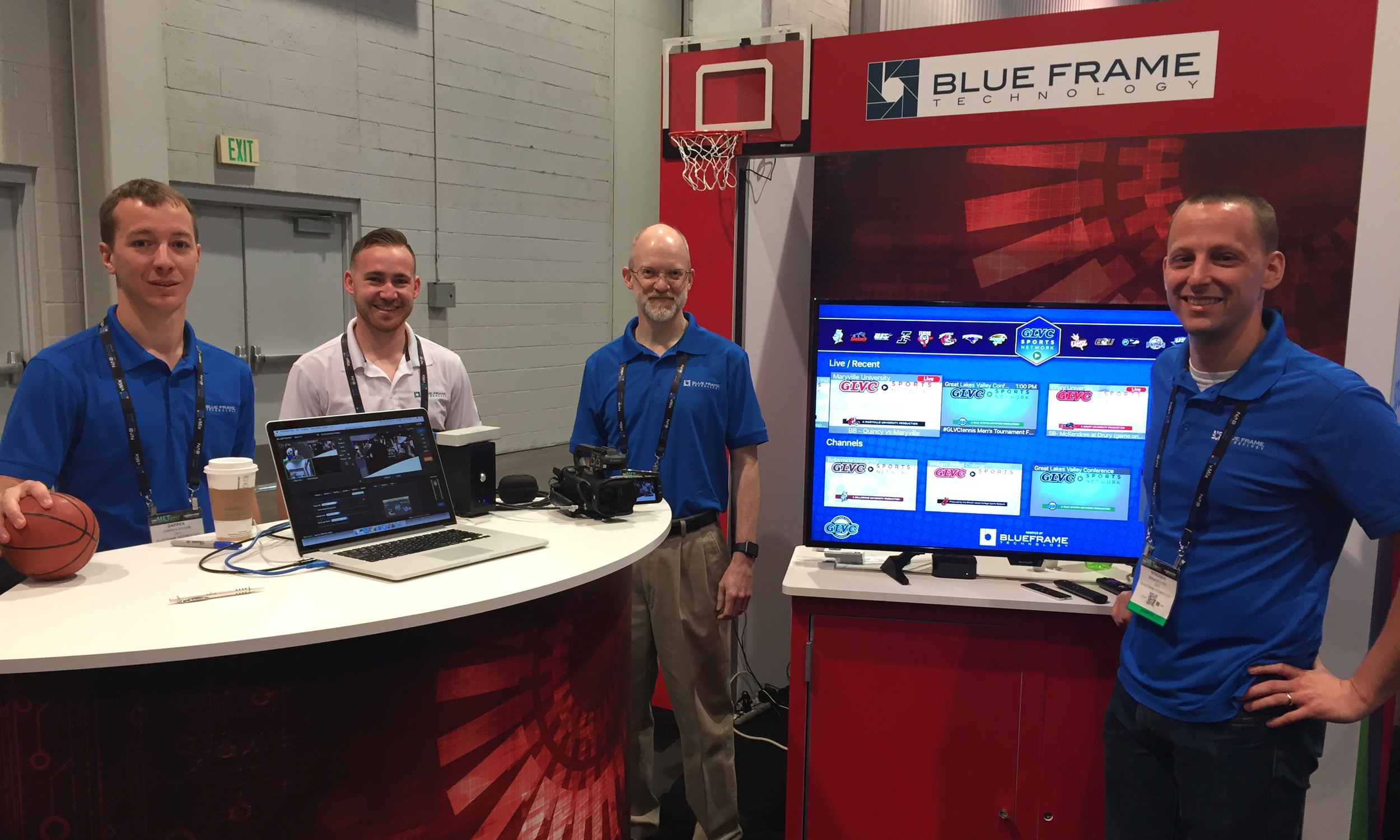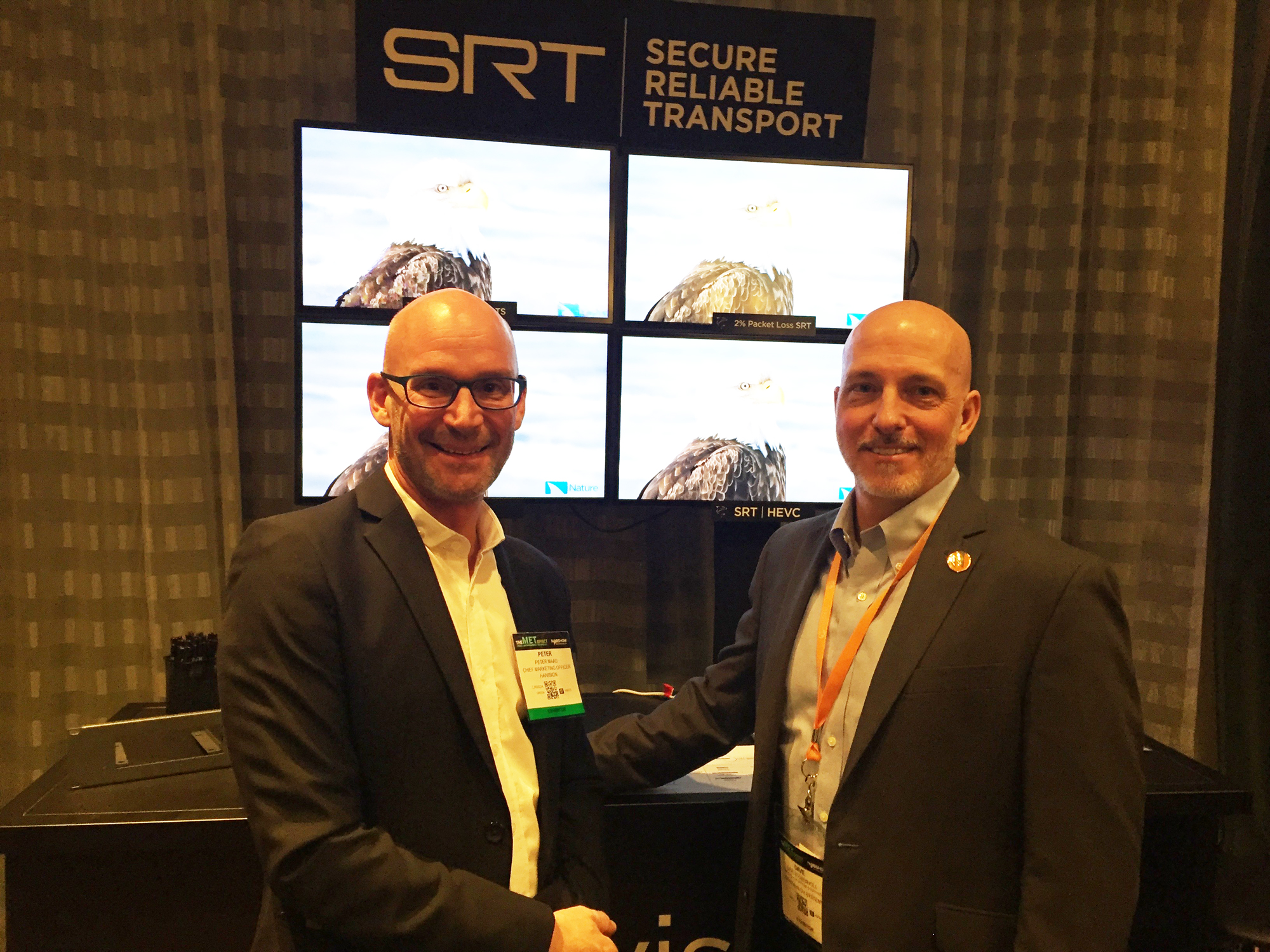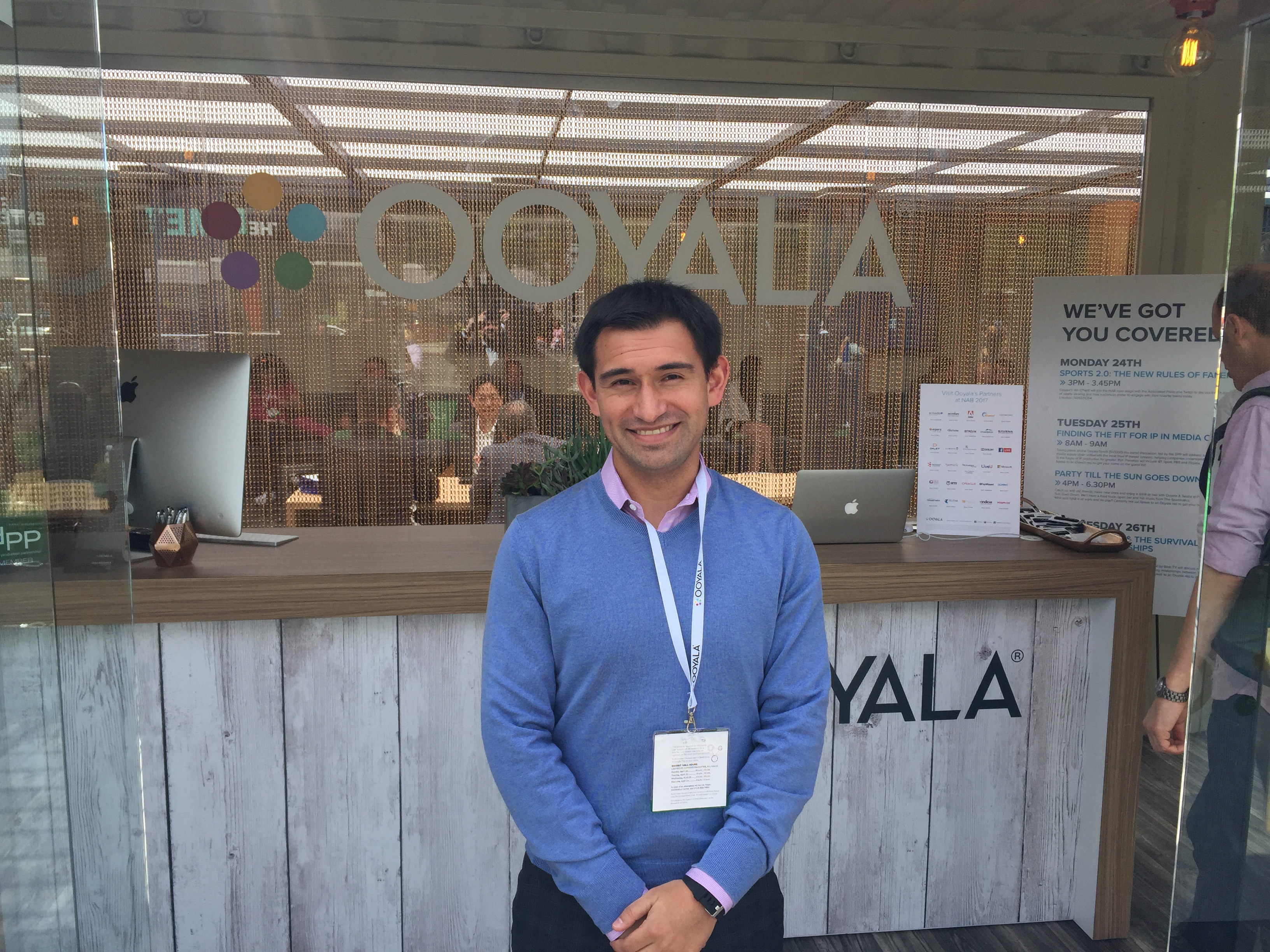Digital SportsTechBuzz at NAB 2017: Bytes From the Floor in Vegas
OTT, social, VR, and digital distribution make their presence felt
The NAB Show has a long-standing history of offering broadcasters and video technology geeks an opportunity to peek at the most cutting-edge technology when it comes to cameras, lenses, replay engines, routers, and other various rack-mounted boxes that help transmit or store video assets.

In a sign of the changing times, NAB Show offered attendees a look at some of the latest social video stools with a Facebook Live Video Solutions Pavilion in the South Upper Hall.
But as the idea of what actually makes a “broadcaster” in today’s day and age changes, the NAB Show has followed course, placing a spotlight on over-the-top content workflows, streaming protocols, live social video tools, virtual reality, and much more. This year’s show took another noted step forward in that department thanks to its overall theme: “The M.E.T. (Media. Entertainment. Technology.) Effect.”
Here’s a quick look back at how some of the more innovative tech vendors in the business captured the momentum of that movement In this roundup, catch up on the latest from companies like: Akamai Technologies, Aperi, BlueFrame Technology, Ericsson, Haivision, Harmonic, Limelight Networks, LiveLike VR, NeuLion, Ooyala, Globecast, Telescope, Telstream, Verizon Digital Media Services, The Video Call Center, Vizrt, and Wowza Media Systems.
OTT Star Shines Bright
A variety of new developments to support high-quality OTT video were shown by Harmonic. These include a new real-time streaming workflow said to match the latency of live broadcast and is enabled by a combination of packaging content in the new Common Media Application format (CMAF) and HTTP chunked transfer encoding.
Akamai Technologies emphasized the “Audience of You” mission to help deliver the best possible experience for every OTT video viewer. Live demonstrations at Akamai’s booth featured device-level innovations such as Media Acceleration, which uses technology integrated directly into consumer OTT applications designed to enhance the performance of media delivered over the Akamai network and optimize the viewing experience for each individual end user.
NeuLion further enhanced its efforts to support live streaming and OTT through deeper analytics and (potential) monetization with the debut of NeuLion ACE Analytics. Chris Wagner says, “NeuLion ACE Analytics is our way of offering sports-content rightsholders a brand-new dashboard of live watch data, customer billing data, and support data that they can use to pinpoint new subscribers and how to keep the ones that you have.”
At its Sunday press conference, Ericsson unveiled how it plans to “transform TV” with new OTT dynamic–ad-insertion technology (MediaFirst Stream Personalization), MediaFirst video-processing solutions (MediaFirst Management Controller and MediaFirst Encoding Live 8.1), and cloud-based captioning services (Snap Captions, Subito Vault, and Subito Conversion and Delivery Engine), as well as its Content Discovery Ecosystem and Unified Delivery Network.
Verizon Digital Media Services and Levels Beyond have joined in a strategic partnership to market a combined solution that consolidates and streamlines the workflows of broadcasters and OTT providers. The Reach Engine from Levels Beyond will power the MX: Orchestration feature within the Verizon Media Xperience Studio from Verizon Digital Media Services. The content intelligence that comes from managing assets within Reach Engine complements the Verizon Media Xperience Studio.

From left: Darren Brown, Josh Braun, Chris Knowlton, and Ben Kant hold down the fort at BlueFrame Technology’s exhibit in the SPROCKIT showcase.
In its second year at the SPROCKIT showcase, BlueFrame Technology put its Digital Network Platform front and center for sports clients to see. BlueFrame partner Ben Kant believes that the comprehensive OTT platform is the highlight of the company’s work over the past year, and it now boasts added integration with social-media platforms. The company also recently introduced streaming-media veteran Chris Knowlton as the newest member of its team. Knowlton is here in Las Vegas exhibiting with BlueFrame Technology.
Globecast presented a strategy for its new, as yet unnamed, cloud-based services that it intends to roll out in time for IBC2017. According to Globecast CTO Sylvain Merle, the company started the project to build its own MAM solution in the cloud to better support its customers’ media-solutions requirements and their increased desire to operate across international borders. Meanwhile, Globecast, in partnership with Harmonic and the VIVE Lifestyle Network, is showcasing a new linear, UHD, HDR OTT connected-TV platform service at its booth. The new service, available through VIVE’s branded app, delivers UHD-HDR linear streaming content to consumers.
Joop Jansen and the team at Aperi settled into their own this year with its virtualized, native live IP media platform shipping. In addition Ericsson is now providing codec applications that can run on the platform and make it suitable for 4K and OTT needs Says Jansen, “It’s a huge thing for us as our business model is based around working with the best brands in the industry.”
Streaming and Digital Video Delivery: The Evolving Backend

Haivision EVP/CMO Peter Maag (left) with Wowza Media Systems’ CEO/co-founder David Stubenvoll at Monday’s press conference following the announcement of the groundbreaking SRT Alliance.
Wowza Media Systems and Haivision shook up the streaming-video world when they announced formation of the SRT (Secure Reliable Transport) Alliance. The partnership introduces the open-source availability of SRT, a video-transport protocol to enable delivery of high-quality and secure, low-latency video across the public Internet.
Haivision also has announced that its KB Series H.264/HEVC live-video encoders are qualified for use with the new Akamai Media Services Live capabilities for low-latency live and linear online video delivery.
Highlighted at the Ooyala booth was the Ooyala Flex, the company’s versatile and customizable solution for video-production and -distribution workflows is designed to get content to market faster. It is a cornerstone in Ooyala’s transformation into an IVP, complementing its full set of product offerings across ad tech, analytics and video platform solutions. Founder/SVP, Products and Solutions, Belsasar Lepe explains how the platform can streamline a very laborious rights-management and video-distribution process: “Every single partner has their own metadata scheme, their own codec that they support, different partners that they work with, etc. We give them a mechanism to automate that and to make it work very easily. It helps them get the most out of their content rights.”
With a focus on delivering high-quality digital experiences, Limelight Networks showed new enhancements to its Video Delivery Services. The service offers DRM support, low-latency live-streaming capabilities, live-to-VOD recording, and live-streaming support for mobile devices. Says Mike Milligan, “It’s not about just having the live video; it’s how do you monetize it? We talk to a lot of our customers who do live events, and the thing that you need to know during live events is how’s it going, what are the issues, what is my engagement?”
“Streaming is exploding,” revealed Scott Murray, VP, marketing and desktop products, Telestream at the company’s press conference. He said that 18% growth in devices capable of receiving streamed content is expected by 2021 and that, currently, 3 billion devices can receive streamed content with 4 billion hours of streamed content being viewed each week.
Verizon Digital Media Services (Booth SU3605) demonstrated its new Verizon Media Xperience Studio, a first-of-its-kind, cloud-based content-intelligence system (CIS). According to Jason Friedlander, the company has “worked hard over the past two years to develop a software-based, web-based workflow for managing live events, primarily sports.” This solution — which is making its North American debut — is the fruit of that labor.
Live Social Video Breaks Barriers With New Tools
Telescope (Booth SL9930) showed off its solutions that help content creators become better storytellers in a live-streaming and social-streaming environment. CEO Jason George says, “Our mantra is how do we make video more engaging wherever people are viewing it.” Telescope is taking its Live Studio product — launched last year in coordination with the expansion of Facebook Live with the opening of its API — and taking that to the next level with cloud production tools and services.
Vizrt’s story-creation tool, Viz Story, allowing journalists to edit and quickly publish to social media within, was a tech demo at NAB 2016 but is now a working product. Vizrt also demonstrating the integration of its asset-management tools with professional video applications included in Adobe Creative Cloud. Also new for NAB 2017, Viz One supports 4K UHD media in both Apple ProRes and Sony XAVC formats.
Dish Network’s Sling Media officially entered the live-production business with SlingStudio, a new wireless, portable multicamera system (starting at just $999) that monitors and edits four HD video inputs from up to 10 connected cameras or smartphones. It also live-streams to Facebook Live and YouTube while simultaneously recording to USB hard drive, SSD, or SD card for postproduction.
The Video Call Center CEO Larry Thaler was excited to show off the latest with his company’s patented video-caller platform that provides the world’s first production workflow using two-way video chat to enable remotes by smartphone and video-caller participation in live television. Among the new additions is the “Bleep It” button, which is essentially a “cough switch” that allows a host to control the cleanliness and professionalism of the broadcasts. Thaler said that, when a broadcaster live-streams, the brand’s credibility and respectability are in the spotlight. The VCC’s streaming broadcasters value their brand and need to be able to protect it.
Virtual Reality Continues to Chart Its Path
LiveLike showcased its Virtual Sports Suite. The headset-free VR experience places viewers at the center of a “VIP room” in the stadium. Users are provided with a range of storytelling and data options live during the match. For broadcasters, the Virtual Sports Suite can provide both second-screen and VR content, all via an app. Headline projects have included Super Bowl 50 with Fox Sports and the football derby between Manchester United and Manchester City in the UK.
VRLIVE and All Mobile Video have formed a partnership to bring the most advanced and highest-quality workflow for 360º VR broadcast to the industry. “To this point, VR integration within live events has mostly been an afterthought, which can definitely impact the end-user experience,” says Eric Duke, president, AMV. “VRLIVE is the leading VR-production company that is making tremendous strides in innovating the market. This partnership will be the key component to providing viewing audiences with a truly immersive experience.”
SES (Booth SU1910), along with Fraunhofer Heinrich Hertz Institute HHI and Newtec, demoed an immersive VR experience with a live 360-degree UHD VR satellite broadcast from the exhibit floor.
At the 2017 NAB Show, the SVG SportsTechBuzz was compiled by the SVG U.S. and SVG Europe editorial teams: Ken Kerschbaumer, Brandon Costa, Jason Dachman, Dan Daley, David Davies, Karen Hogan Ketchum, and Fergal Ringrose.



